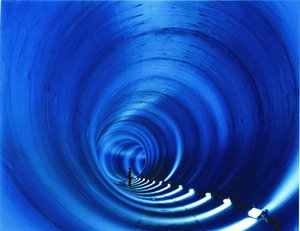

Due to the high value of tunnels a good maintenance scheme must be planned for all underground structures during its life of operation.
Maintenance
A good maintenance system will allow:
- Detection in advance structural or functional problems that might jeopardize the security or functionality of the tunnel
- Avoidance of higher costs of repair and disruptions due to late interventions
- Better forecast of future degradations or problems that might arise in the structure
- Improvement of the length of the structure operative life
- Improvement of the tunnel durability
- Slow down of the deterioration in the tunnel
Most common damages
|
|
Maintenance starts with a good inspection scheme, normally distributed along the lifespan of the structure, with different degrees of examination, which can vary depending on the country, regulation, budget available and importance of the structure:
Long term inspections (every 5-6 years)
Close examination at hand distance of all relevant parts like grounding, load capacity, sign posting, construction elements, water seals, disguising, corrosion, lines, etc. These inspections are normally composed of visual inspections, profile measurements, deformations measurements, axis and geometry tracking, scanner measurements, etc.
Medium term inspections (every 3-4 years)
Detailed visible inspection of relevant elements of the structure like in the main inspections.
Annual inspections:
Walk through for getting notice of visible irregularities.
Special inspections:
Main inspection after special incidents like accidents, fire, earth quakes or break in of water. In this case, specific monitoring and local control of the damaged zone takes place, with non destructive local testing methods and eventually core drillings, laboratory tests, etc.
After the inspections, documentation is made where all discovered damages are recorded. According to the gravity, the existing budget and the consequences of the damages, these can be classified into:
- Urgent, which need to be repaired immediately
- Not urgent, but to be repaired in the medium term
- To be watched, to be repaired in the long term
In some countries, different scales of gravity are used, classifying qualitatively the damages into good, acceptable, defective, poor and alarming.
